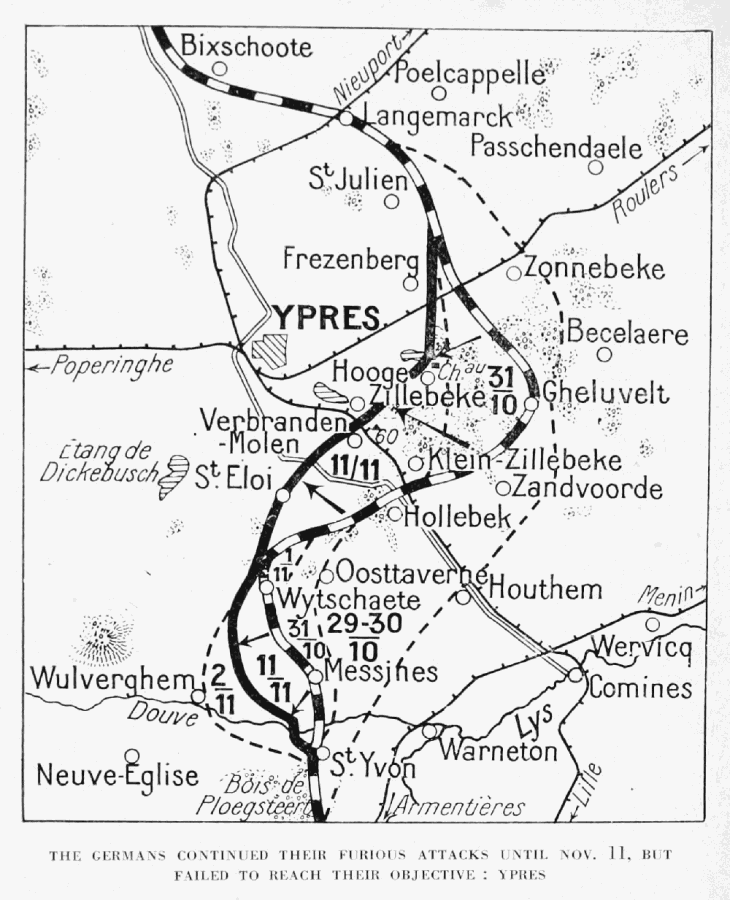4th November 1914
After a quiet morning the Dorsets witnessed French troops retiring from the direction of the Institute Royale, which was a large collection of monastical buildings in Messines. There’s an interesting blog on excavations in Messines here along with some interesting photographs of the Intitute before and during the war.
Knowing the French tactics for offensive the Dorsets assumed that a counter attack was imminent and so they informed a certain Colonel Butler. This was Lieutenant Colonel Richard Harte Keatinge Butler. He had been CO of the 2nd Bn Lancashire Fusiliers but had now assumed responsibility for the entire Ploegsteert Wood area. This entailed much of the 11th and 12th Brigades. We’ll hear more about Butler later on.
The French never counter attacked, presumably because of the heavy mist that day. The Dorsets sent out patrols out to find out what the French were up to on their immediate left. Other than that the rest of the day was fairly quiet.
Interestingly, as German snipers began to worm their way into the eastern edges of the wood, requests came into 11th Brigade HQ for rifle and hand grenades and steel loopholes. The British didn’t have an answer to the German’s sniping at this period in the war as we’ve seen before. This evidence shows that the British troops on the ground were crying out for the equipment to respond effectively but they weren’t to get it for a very long time.
